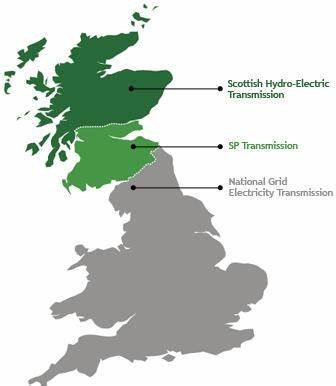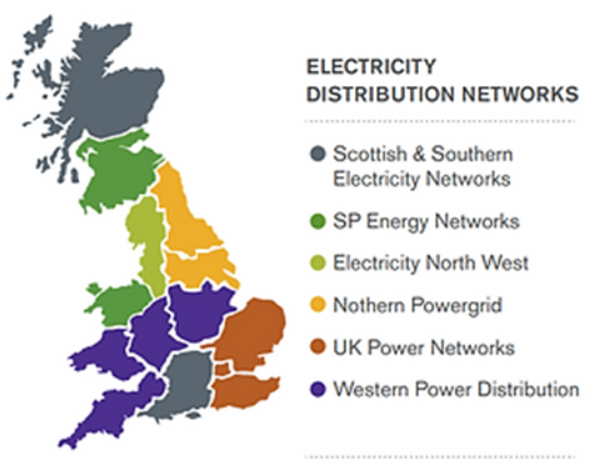The distribution contribution: future-proofing the power grid
Power, traffic jams, the grid and the roads: an (attempted) explanation of how your solar panels, batteries and electric vehicles are causing headaches and how power networks are dealing with them.
The power grid is something that almost everyone uses daily. Even though it is facing unparalleled changes, most of us don’t stop to wonder where our power comes from or whether it will ever stop. This blog seeks to explain some of the challenges the ‘grid’ faces from society’s drive to decarbonise and insulate us from energy price shocks, by comparing it with…the public transport network and basing it on the work that I and my team, Power Grids and Markets do at DNV. Hopefully it starts to explain what a ‘power grids consultant’ does!
In Great Britain (GB), the ‘grid’ is made up of two interconnected networks: the transmission networks and the distribution networks. The transmission networks carry power very long distances, at very high voltages (from 275,000 volts up to 400,000 volts – for reference, the sockets in a normal household are 230 volts). High voltages reduce the amount of power that is lost as the electricity travels through the cables. National Grid Electricity Transmission (NGET) compares the transmission networks to the motorways in the country.1,2 NGET is the Transmission Owner (TO) in England and Wales, while SP Transmission (SPT) is the TO in the south of Scotland and Scottish Hydro-Electric Transmission (SHET) is the TO in the north of Scotland.

Continuing that analogy, the distribution networks are like the A roads and B roads. They take the electricity from the transmission networks to our homes and businesses, transforming it from higher voltages (132,000 volts) to lower voltages (230 or 400 volts) as it gets closer to where it’s needed. There are 6 distribution network operators (DNOs) in GB: National Grid Electricity Distribution (NGED), UK Power Networks (UKPN), Scottish and Southern Electricity Networks (SSEN), SP Energy Networks (SPEN), Electricity North West (ENWL) and Northern Powergrid (NPg).

Historically, the ‘grid’ has taken electricity from centrally located gas and coal power plants out to homes and businesses. Moving electricity in one direction, from power plants through transmission and distribution networks to an end user. However, that is all changing.
Increasingly, customers expect to be able to use the grid as a two-way system, taking power from the grid to charge their cars and power their homes as well as providing it to the grid when their solar panels produce too much power for self-consumption. In addition, more and more generators are expecting to be able to connect to the grid in new and ‘random’ locations away from traditional power plant sites. So, network operators are having to manage greater loads on their networks, loads in places they weren’t expecting and having to deal with power travelling in both directions.
If the grid were our roads, they would have to be taking more cars, allowing cars to start journeys from new locations and having to allow cars up streets that were previously one-way streets. Just as transport planners would have to widen existing roads, build new ones and deal with the mess of untangling a complex one-way road network, network operators, particularly the distribution networks, are having to manage a similar set of issues on the grid.
So how are they doing it?
There is a range of options for distribution networks to deal with these problems, but they start by moving from operating the network as a passive set of wires and cables to viewing the network as a holistic system over which they have control. Similarly, the transport network is not limited to the roads and cars on it, but it includes the people travelling on it and several alternative means of transport. This change has seen DNOs move from being network operators to system operators: distribution system operators (DSOs).
Moving to becoming a DSO means these companies need to take on a range of new capabilities to allow greater flexibility in the system. Flexibility allows networks to explore alternative solutions to just building more cables, wires and substations to increase capacity. As one example, instead of requiring more power to be produced at periods of high demand, networks can ask consumers to temporarily demand less power. This is enabled by the roll-out of smart meters in consumers’ homes which allows networks to observe real-time power usage and compensate consumers for the power demand they have avoided. In a similar way, transport planners seek to avoid traffic build up, not just by building new roads, but also by reducing the demand on the road network by promoting other forms of transport or encouraging people not to travel at all. This is enabled by having transport data showing how many cars have been on the roads and how many people have taken buses or tubes to do similar journeys.
Although easy to type out, enabling this shift in operation requires network / system operators to develop a wide range of new capabilities and operating model. They must be able to design and monitor power markets to compensate customers for the additional/reduced demand or supply they have generated. They must be able to gather and interpret large amounts of new data from smart meters, electric vehicles, solar panels, etc. to understand how the system will behave. Similarly, transport planners must price new transport methods appropriately and understand how new developments or major events will affect demand for travel and plan accordingly.
The Power Grids and Markets team at DNV, of which I am a part, has been supporting networks and regulators around the world as they make the transition to becoming DSOs. This involves helping them to answer a wide range of questions, including identifying the best operating models to implement and the associated costs and benefits of different models. We have worked with networks in GB and the UK, Europe and North America to help them on this journey. In the UK, we helped the Energy Networks Association (ENA) – the industry body for power and gas networks – to develop a DSO implementation roadmap to give DNOs a pathway to follow. 4 In North America we have been supporting a regulator in Canada to understand what the shift to DSO will mean for their province and whether any particular DSO model would suit the system conditions best. In the USA we have been working with a state authority to help them understand and design regulatory mechanisms for a futureproof, flexible grid.
So, we don’t go out and build substations or fit solar panels. We aren’t manufacturing transformers or putting up power lines. But we do help to ensure power networks and associated markets operate efficiently and for the greatest benefit of stakeholders. In this case, it involves helping networks to move from passive machines to smart systems and helping stakeholders make the most of the tools available to them to accelerate the shift to Net Zero.
References
1 Substations, pylons and overhead lines | National Grid ET
2 NGET is a wholly owned business unit of National Grid plc. National Grid plc is a utility company headquartered in London which owns electricity distribution and transmission networks in Great Britain and the northeastern USA. National Grid plc is distinct from what is sometimes colloquially referred to as ‘the national grid’. ‘The national grid’ is the network of distribution and transmission networks that transport power around the country.
3 IDNO vs DNO: What’s the difference? - Rock Power Connections
4 ENA DSO Roadmap Q3 2021 | Tableau Public
Substations, pylons and overhead lines
04/03/2025 16:30:00
